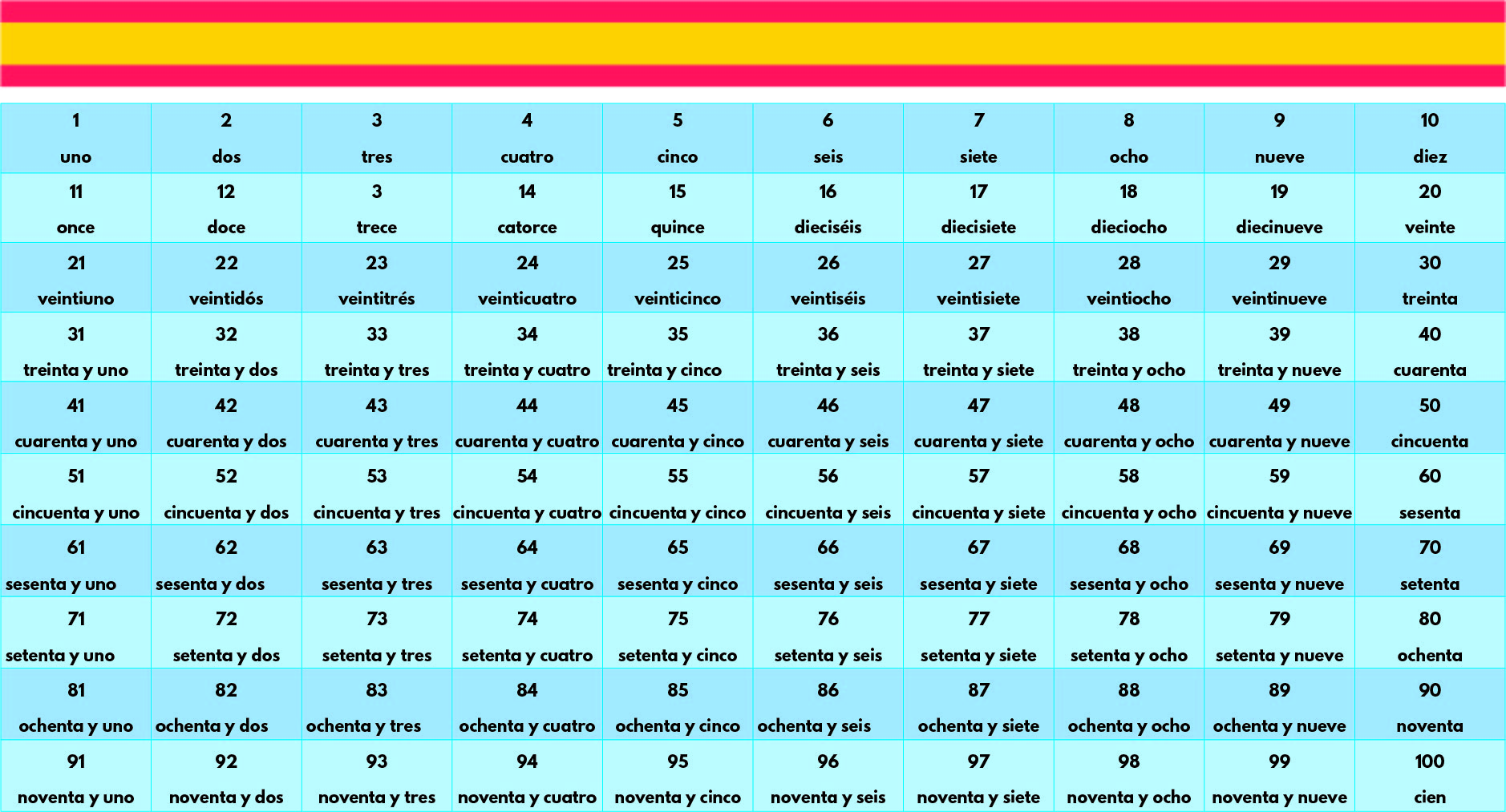

IMPORTANT: Unlike English, you don’t need another and (y) between the hundreds and tens. Novecientos + ochenta y cuatro - nine hundred and eighty-four Going beyond this, you can then easily create other Spanish numbers by combining these multiples of a hundred with the numbers I taught you above.ĭoscientos + sesenta y tres - two hundred and sixty-three Mil (1000) should be obvious as it’s used in English. So, there’s an easily distinguishable pattern for the multiples of a hundred. Just remember that it’s simply because quinientos is much easier and more natural to say than quincientos - it rolls off the tongue easier. Just note that the -to ending is only used when counting.įor 200 - 900, you’ll notice that the main exception here is 500, which is spelled with a q (like the ordinal ones - see above) and drops the c.ħ00 and 900 have insignificant spelling variations too.ĭon’t get hung up on spelling for exceptions like this. Counting from 100 - 1000įrom here on, Spanish numbers just get easier and easier! 🙂ġ00 is simple - just think cent+ury (take off the - ury). Just like any adjective - the gender must agree (although, you can probably see that unlike other adjectives, ordinals come before the noun they’re describing). With Spanish ordinal numbers, just keep in mind that your numbers need to agree with the gender of the object you’re counting.

In English, eleven and twelve are very different to the other teens (e.g. This changes at 13 however, which is literally ten + third and so on.īut again, if you compare this to English it’s not that far off. 11 is literally one + ten and 12 is literally two + ten. The others up until 11 are fairly straightforward to memorize but you’ll notice that 11 and 12 are different to 13 onward. Tercero is a bit different since the letters switch around (but so does third in English!). Primero is related to primary and segundo actually sounds very close to second. The first two ordinal Spanish numbers: primero and segundo (1st and 2nd) are easy to remember. It’s often confusing for learners of English to remember -st, -nd, -rd, -th and put them on the appropriate numbers. Just like in English, there are clear suffix patterns you can follow (and exceptions you just have to learn regardless). Latin/French influence aside, English also shares common ancestry (Proto-Indo-European) so even our Germanic numbers bear close resemblance. You could almost say that it’s just a matter of learning new pronunciation and spelling for the most part.Īnd if you decide to learn Italian or French after Spanish, you’re already most of the way there! 🙂īut even for monolingual English speakers who have never learned a foreign language - you’ve already encountered all of these Latin-derivatives in some form or another. If you’ve already learned or been exposed to these linguistic cousins then you basically already know Spanish numbers (kind of!). How does etymology help you learn Spanish numbers?


 0 kommentar(er)
0 kommentar(er)
